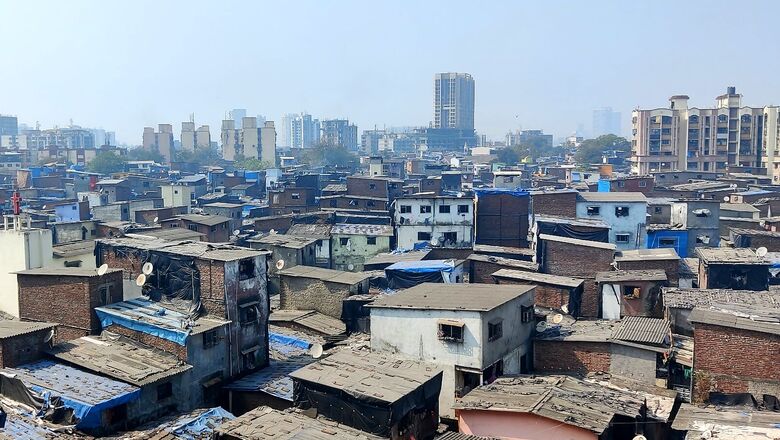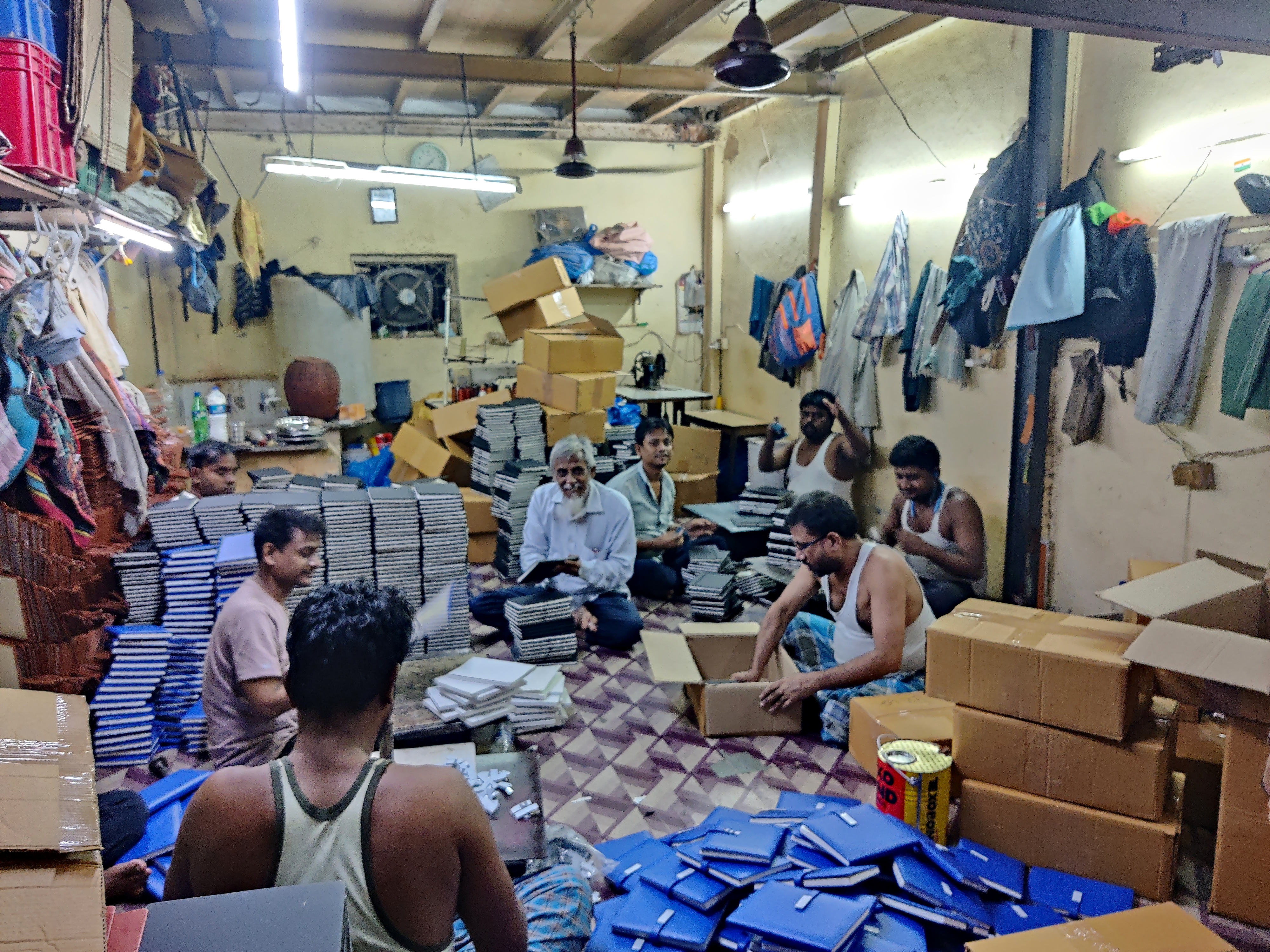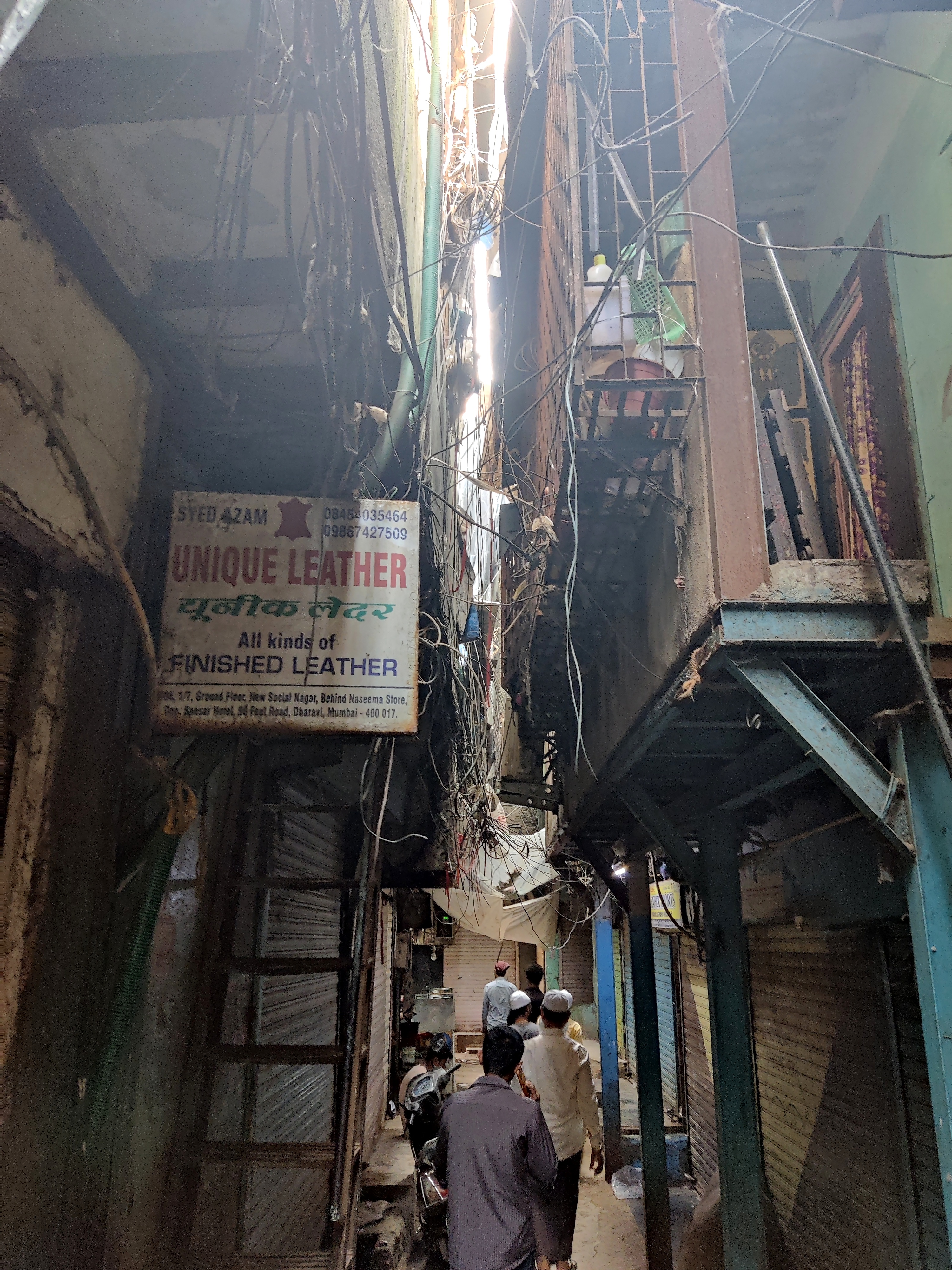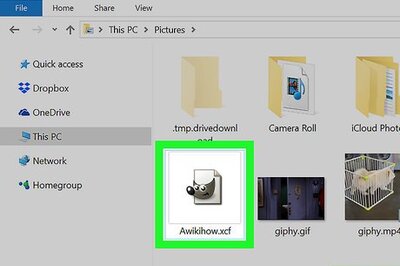
views
A parlour in one small room, a cloth business in the other. Elsewhere, customers carefully inspect the quality of leather goods, negotiating the right price, as children run around in the narrow, dingy lanes of Asia’s largest slum.
Amidst all this buzz, you may miss Ehsaan Ahmed’s manufacturing unit. He produces notebooks there.

Peep into his 27×13 room and you’d see 10 people cramped up amidst a pile of books — some glueing the papers together, some getting the covers ready and taping them up.
He claims they manufacture around 1,000 notebooks a day and ship them all over India.
“More in the south (where his notebooks are shipped). Ahmedabad, Bengaluru, Chennai, Surat, Pune — all these cities as well,” he says.
Ahmed’s unit is among the roughly 20,000 small-scale manufacturing units operating in Dharavi.
“Dharavi is Maharashtra’s, Mumbai’s dhadkan (heartbeat). If the heart goes away, the story will be finished,” Ahmed, 32, says.
The fear for the city’s “heart” comes amidst the slum getting a facelift. The Adani Group last week bagged the Rs 20,000-crore Dharavi redevelopment project, with a winning bid of Rs 5,069 crore.
Located in central Mumbai, the sprawling 600-acre+ slum is adjacent to the Bandra-Kurla complex, a commercial hub.
But Ahmed, like many in the community, firmly believes such large-scale redevelopment could endanger small businesses. The closely knit nature of the community, relative proximity to places like Crawford Market in south Mumbai (where his notebooks sell) and quick, cheap availability of his business needs has made it a favourable location.
Why not relocate to other industrial areas in Thane, Bhiwandi in the interim? “Costs will go up significantly (manufacturing and logistics). It can’t be done. It’s not possible,” Ehsaan, originally from Bihar, replies instantly.
Leather products, jewellery, snacks, books, clothes, textiles, and many more are fledgling businesses in Dharavi with an approximate turnover of $1 billion.

A few metres and twisted lanes away, Pradipa Jadhav has been living in her 10×10 room in Dharavi for 40 years now. She offers a smile and shakes her head when asked if she knew about the slum’s redevelopment plans.
“We weren’t aware. We heard some residents will be meeting to discuss a plan of action. It’s then we got to know (about the redevelopment). Also, we heard some things on television recently. But everyone doesn’t have a TV, right?” Jadhav, 55, said.
Other residents News18.com spoke to clarified that they aren’t against the redevelopment per se, but have reservations about their future. This, they say, is a result of a lack of consultations by the authorities.
MORE THAN A DECADE IN THE MAKING
The Eknath Shinde-led Maharashtra government floated a proposal in October for Dharavi redevelopment and rehabilitation. It was the fourth time the state government had attempted to redevelop the slum — unsuccessfully so the last three times.
In 2008 and 2016, no developer responded to the tenders. In January 2019, a Dubai-based firm, Seclink Technologies Corporation, was awarded the contract for redevelopment. However, the project hit a roadblock due to issues with the railway land.
The project is being executed by the Dharavi Redevelopment Authority (DRA). It was set up in 2004 by then-Congress chief minister Vilasrao Deshmukh as part of the Slum Rehabilitation Authority (SRA). The aim was to decongest Dharavi and have one central authority to coordinate the development of the entire area.
For 18 years now, nothing concrete has happened.
“Three generations of my family have passed. I have stayed here all my life, only heard of redevelopment but nothing has happened,” a local leader said.
Over the years, the increasing land value of Dharavi has also caught the eye of many developers given its prime location. Some residents believe it’s this approach coupled with red tapism that has played a role in the slum not getting its due.
Experts say a more humane approach is needed in order to redevelop a large chunk of land.
“If you compare Dharavi with any other redevelopment of slum pockets or government land, I believe the land value should be notional. It should be zero like any infrastructure project. Like a public school or hospital, land value is zero. There’s only the construction cost,” architect Nitin Killawala told News18.com.
Killawala suggested that an ideal way to go about the “complex” project would be to take out a small area, redevelop and proceed from thereon after widespread consultations with all stakeholders including the residents.
Before the master plan shapes up, the project has already run into legal trouble. The Bombay HC on Monday sought a reply from the SRA on whether the Mahim Nature Park was included in the project or not. While authorities claimed orally that it wasn’t the case, petitioners say the green zone had been earmarked in the tender documents as land needed for development.
The SRA has four weeks to file its reply.
FOCUS ON IMPROVING QUALITY OF LIFE
If all goes as per plan, 10 million square feet of redevelopment is estimated to be completed in 17 years. The Maharashtra government has targeted to complete rehabilitation of residents within seven years from the start of construction.
As part of the rehabilitation process, the government has decided to give a 405-square-foot flat to each eligible slum dweller, Moneycontrol reported.
Officials say the next step in the project would be seeking the state government’s final nod, setting up a special purpose vehicle (SPV) consisting of the government, the winning bidder, and experts, which will draw up the master plan.
“It will take a few months (before the actual work starts),” SVR Srinivas, CEO of Dharavi Redevelopment Project, told News18.com.
He admitted the project will be “challenging” given its size and the rehabilitation process involved. However, Srinivas also emphasised on the attention that will be given to maintain Dharavi’s identity.
“After the project, it’ll not just be a slum. It will be a part of the mainstream city. We would like to have a thriving economy. (The focus will also be) on improving the overall quality of life (for residents),” he told News18.com.
Srinivas added that incentives like not levying SGST on any Dharavi products for the next five years are aimed at making sure the businesses survive in the interim.
Officials added that the bidding process “is not new” and assured that residents, as important stakeholders, will be involved as and when the masterplan comes up.
Read all the Latest India News here


















Comments
0 comment